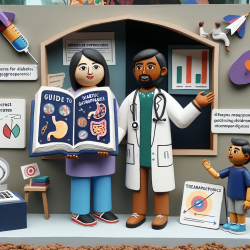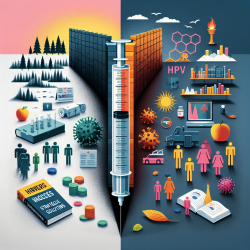Early Environmental Risk Factors for Neurodevelopmental Disorders: Insights from Twin and Sibling Studies
As a practitioner dedicated to improving outcomes for children, it is crucial to stay informed about the latest research on environmental risk factors for neurodevelopmental disorders (NDDs). A recent systematic review titled Early environmental risk factors for neurodevelopmental disorders – a systematic review of twin and sibling studies provides valuable insights into the role of early environmental exposures in the development of conditions such as autism spectrum disorder (ASD) and attention-deficit/hyperactivity disorder (ADHD).
Key Findings from the Review
The systematic review analyzed 140 studies, focusing on case-control and cohort studies involving twins or siblings with environmental exposures up to the age of six. Here are some of the significant findings:
- ASD Risk Factors: Advanced paternal age, low birth weight, birth defects, and perinatal hypoxia and respiratory stress were associated with an increased risk of ASD after adjusting for familial confounding.
- ADHD Risk Factors: Low birth weight, gestational age, and low family income were linked to both categorical and dimensional outcomes of ADHD.
- Questioned Factors: Several previously suspected factors, such as maternal uterine bleeding, preeclampsia, and gestational diabetes, were not significantly associated with ASD after accounting for familial confounding.
Implications for Practice
These findings highlight the importance of considering familial confounding when evaluating environmental risk factors for NDDs. Practitioners should be cautious about attributing causality to environmental exposures without robust evidence that accounts for genetic and familial influences.
To improve your practice, consider the following steps:
- Stay Informed: Keep up with the latest research on environmental risk factors for NDDs, especially studies that use genetically informed designs like twin and sibling comparisons.
- Educate Families: Provide balanced information to families about the potential risks and the importance of considering genetic factors alongside environmental exposures.
- Collaborate with Researchers: Engage with researchers to contribute to and stay informed about ongoing studies that aim to disentangle genetic and environmental contributions to NDDs.
Encouraging Further Research
The review also emphasizes the need for more high-quality, genetically informed studies on a broader range of NDDs beyond ASD and ADHD. There is a critical need for research in diverse geographical settings to ensure findings are generalizable across different populations.
As a practitioner, you can play a role in encouraging and supporting such research efforts by participating in studies, advocating for funding, and collaborating with researchers to address these gaps.
To read the original research paper, please follow this link: Early environmental risk factors for neurodevelopmental disorders – a systematic review of twin and sibling studies.










